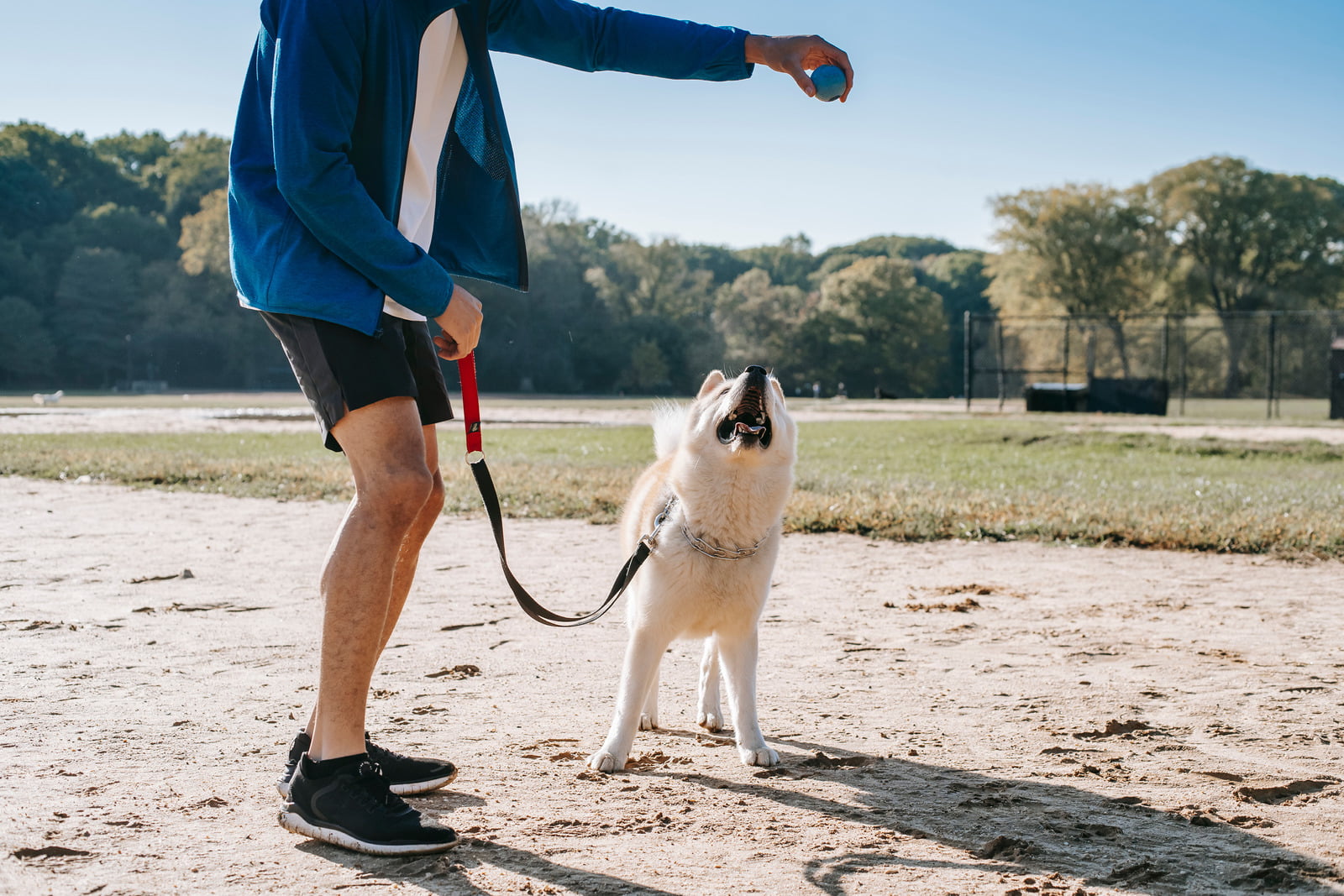Are you looking to learn how to do obedience training for dogs at home? Obedience training is essential for the well-being of your furry friend and contributes to a harmonious relationship between you and your pet. In this article, we will explore the importance of obedience training for dogs and provide valuable tips and techniques for effective training in the comfort of your own home.
Obedience training lays the foundation for a well-behaved and obedient dog, ensuring their safety and that of those around them. By understanding the significance of obedience training, you can establish clear communication with your canine companion, build trust, and foster a strong bond based on mutual respect.
Setting the stage for successful obedience training requires creating a conducive environment at home. From eliminating distractions to securing the right tools, preparing an ideal space will set the stage for effective learning. In addition to physical preparation, mental readiness is also crucial. Understanding your dog’s behavior and learning style will help tailor the training approach to best suit their needs.
Setting the Stage
When it comes to obedience training for dogs at home, creating a conducive environment is essential for success. Here are some key steps to set the stage for effective training sessions:
1. Remove Distractions: To ensure that your dog can focus during training, choose a quiet and distraction-free area in your home. This could be a designated spot in the living room or a corner of the backyard where there are minimal outside disturbances.
2. Gather Essential Supplies: Before you begin training, make sure to gather all the necessary supplies such as treats, a leash, toys, and a clicker if you plan to use one for positive reinforcement.
3. Set Clear Expectations: Establish ground rules for training sessions within your household. Communicate with family members about the importance of consistency and maintaining a calm environment during training.
Creating an ideal environment for obedience training will help your dog stay focused and engaged, leading to more successful learning experiences.
Remember, consistency and patience are key when it comes to obedience training for dogs at home. With the right environment and mindset, you can set the stage for productive training sessions that will strengthen your bond with your furry friend while also creating well-behaved habits.
Basic Commands
Introduction to Basic Commands
Teaching your dog basic commands is an essential part of obedience training. These basic commands, such as sit, stay, come, and more, not only help you communicate with your dog but also keep them safe and well-behaved. By mastering these commands, your dog will become a well-mannered and obedient companion.
How to Teach Basic Commands
When they comply, immediately reward them with a treat and praise. Repeat this process several times a day until they understand the command.
Common Challenges in Teaching Basic Commands
It’s important to remember that every dog learns at their own pace, so don’t get discouraged if they don’t pick up on the commands right away. Some dogs may struggle with certain commands or become easily distracted. In such cases, it’s crucial to remain patient and persistent. It may also be helpful to seek guidance from professional trainers or obedience classes for additional support in overcoming challenges during obedience training at home.
Positive Reinforcement
When it comes to obedience training for dogs at home, one of the most effective techniques is using positive reinforcement. This involves rewarding your dog with treats, praise, or other forms of reward when they exhibit the desired behavior. Positive reinforcement not only encourages good behavior but also helps strengthen the bond between you and your furry friend.
The key to using positive reinforcement effectively is timing and consistency. When your dog obeys a command or demonstrates good behavior, immediately offer a treat or lavish them with praise. This helps your dog associate the action with a positive outcome, making them more likely to repeat the behavior in the future. Consistency is also essential – make sure that every member of the household follows the same training methods to avoid confusing your dog.
In addition to treats and praise, another form of positive reinforcement that can be effective is using toys or playtime as a reward. For example, after your dog successfully follows a command, you can engage in a brief play session as a way of reinforcing their good behavior. This can be particularly useful for high-energy breeds who may respond better to playtime than food rewards.
| Positive Reinforcement Techniques | Description |
|---|---|
| Treats | Use small, bite-sized treats that your dog loves as rewards for good behavior |
| Praise | Verbal praise such as “good boy/girl” or gentle petting can be just as effective as treats |
| Toys/Playtime | Utilize favorite toys or brief play sessions as alternative forms of positive reinforcement |
Consistency Is Key
Establishing a consistent training routine is essential when it comes to obedience training for dogs at home. Dogs thrive on predictability and routine, so setting a regular schedule for training sessions can help them understand what is expected of them and reinforce their learning. Whether you are teaching basic commands or working on advanced training, consistency will be crucial in achieving success.
To establish a consistent training routine, it’s important to set aside dedicated time for training each day. This could be in the morning before breakfast or in the evening before dinner, depending on what works best for you and your dog. By making training a part of your daily routine, you can create a habit that both you and your dog can rely on.
In addition to setting a regular schedule for training sessions, consistency also involves using the same cues and gestures each time you give a command. For example, if you use the word “sit” to command your dog to sit, make sure to always use this same word rather than using variations like “sit down” or “take a seat.” Using consistent cues will help your dog understand what is expected of them and make their learning process more efficient.
Addressing Behavior Issues
Identifying Common Behavior Problems
Before delving into obedience training for dogs at home, it’s important to identify common behavior problems that may need to be addressed. This can include issues such as excessive barking, jumping on people, pulling on the leash during walks, destructive chewing, and more. By understanding these behavior issues, dog owners can tailor their training approach to effectively address and correct them.
Using Obedience Training to Correct Behavior Problems
Obedience training provides a structured and effective way to address behavior problems in dogs. For example, teaching the “sit” command can help discourage jumping up on people, while teaching the “stay” command can help with impulse control and reduce excessive barking. By incorporating positive reinforcement techniques, such as using treats and praise, dog owners can encourage the desired behavior while discouraging problem behaviors.
Seeking Professional Help
In some cases, behavior problems in dogs may require professional assistance. If a dog’s behavior issues are particularly challenging or persistent, it may be beneficial to seek the guidance of a certified dog trainer or behavior specialist. These professionals can provide personalized advice and support for addressing specific behavior problems through obedience training. Additionally, they can offer insights into underlying factors contributing to the behavior issues and develop tailored training plans for resolving them.
By addressing common behavior problems through obedience training at home, dog owners can create a harmonious environment for both themselves and their pets. With patience, consistency, and positive reinforcement techniques, many behavioral issues can be effectively addressed through obedience training.
Advanced Training
Once your dog has mastered the basic commands like sit, stay, and come, you can move on to more advanced training. This stage of training is not only a fun way to bond with your pet but also provides mental stimulation for your furry friend. Teaching advanced commands and tricks can also improve your dog’s obedience and responsiveness.
One of the first advanced commands you can teach your dog is “heel,” which means walking by your side without pulling on the leash. This command is especially useful during walks and outings with your dog. Another advanced command is “leave it,” which teaches your dog to ignore distractions or objects that they should not touch.
In addition to advanced commands, teaching fun tricks like “roll over,” “play dead,” or “fetch” can keep training sessions entertaining for both you and your dog. These tricks are great for mental stimulation and can help strengthen the bond between you and your furry companion.
Remember that advanced training requires patience, consistency, and positive reinforcement. It’s important to practice these commands in a quiet environment free from distractions before gradually introducing them in busier settings. And always remember to keep training sessions short and positive to prevent frustration for both you and your dog.
| Advanced Training Commands | Benefits |
|---|---|
| Heel | Improves leash manners and control during walks |
| Leave it | Teaches impulse control and helps prevent unwanted behavior |
| Funny Tricks (e.g. roll over, play dead) | Provides mental stimulation and strengthens the bond between owner and dog |
Troubleshooting
Training your dog at home can be a rewarding experience, but it’s not without its challenges. Here are some tips for troubleshooting common issues that may arise during obedience training:
1. Identify the problem: The first step in troubleshooting any issue is to identify the root cause. Is your dog having trouble learning a specific command? Is he displaying behavior problems such as aggression or anxiety? By pinpointing the problem, you can develop a targeted strategy to address it effectively.
2. Seek professional help: If you find yourself struggling with a particular aspect of obedience training, don’t hesitate to seek help from a professional dog trainer. They can provide valuable guidance and customized solutions to overcome any challenges you may be facing.
3. Stay patient and consistent: Obedience training takes time and patience, so it’s important to stay consistent in your approach. Keep practicing the commands regularly and maintain a positive attitude towards your dog’s progress. Remember that every dog learns at their own pace, so it’s crucial to be patient throughout the process.
4. Use positive reinforcement: When dealing with challenges in obedience training, positive reinforcement is key. Use treats, praise, and rewards to encourage good behavior and motivate your dog to continue learning and improving.
By following these troubleshooting tips, you can overcome challenges in obedience training and create a harmonious environment for both you and your furry companion.
Conclusion
In conclusion, obedience training for dogs at home is a rewarding journey that requires dedication, patience, and consistency. As dog owners, it is important to understand the significance of obedience training in creating a well-behaved and obedient pet. By setting the stage with a conducive environment, teaching basic commands, using positive reinforcement, and establishing a consistent routine, dog owners can effectively train their pets to behave appropriately in various situations.
It’s important to remember that addressing behavior issues and moving on to advanced training are natural progressions in the obedience training process. Dealing with challenges and troubleshooting through patience and persistence will ultimately lead to success. While it may be frustrating at times, celebrating every small victory along the way will keep both the dog and the owner motivated.
As we wrap up this discussion on how to do obedience training for dogs at home, it’s crucial to emphasize that every dog learns at its own pace. Therefore, it’s essential for dog owners to approach the training process with understanding, love, and unwavering support. With enough perseverance and commitment, any dog can become well-trained through obedience training at home.
Frequently Asked Questions
What Are the 7 Obedience Commands for Dogs?
The 7 obedience commands for dogs are: sit, stay, down, come, heel, leave it, and off. These commands are essential for a well-behaved and disciplined dog.
What Are the 5 Golden Rules of Dog Training?
The 5 golden rules of dog training include being consistent, using positive reinforcement, setting clear rules and boundaries, understanding your dog’s needs and behavior, and being patient and persistent in your training efforts.
How Do I Teach My Dog Basic Obedience?
Teaching your dog basic obedience involves using positive reinforcement such as treats or praise to reward good behavior. Start with simple commands like sit or stay, and gradually progress to more advanced commands like heel or come. Consistency and patience are key in successful dog training.

Welcome to the blog! I am a professional dog trainer and have been working with dogs for many years. In this blog, I will be discussing various topics related to dog training, including tips, tricks, and advice. I hope you find this information helpful and informative. Thanks for reading!





